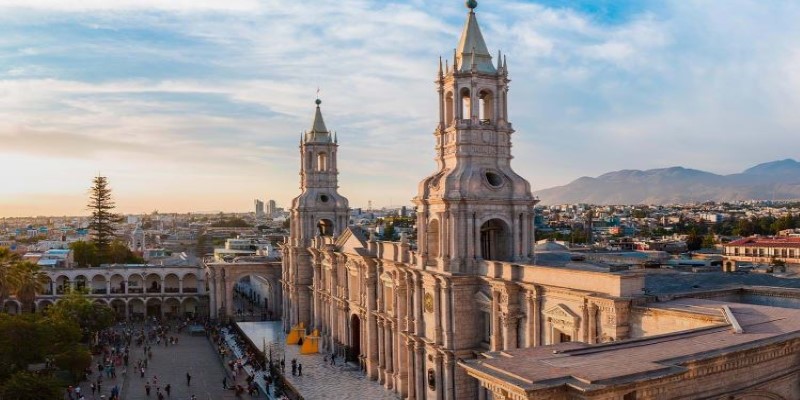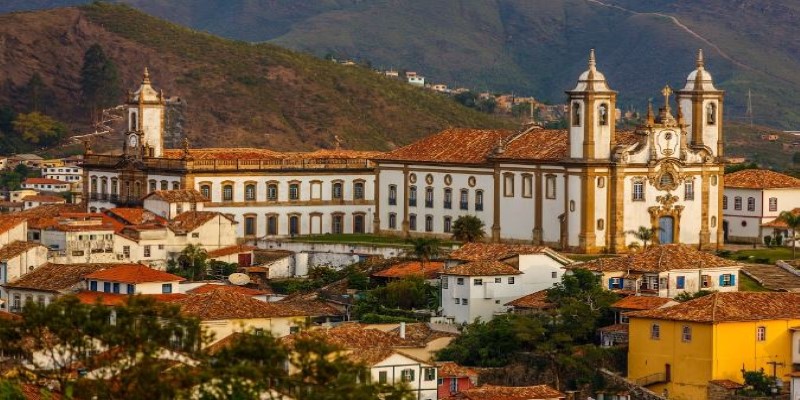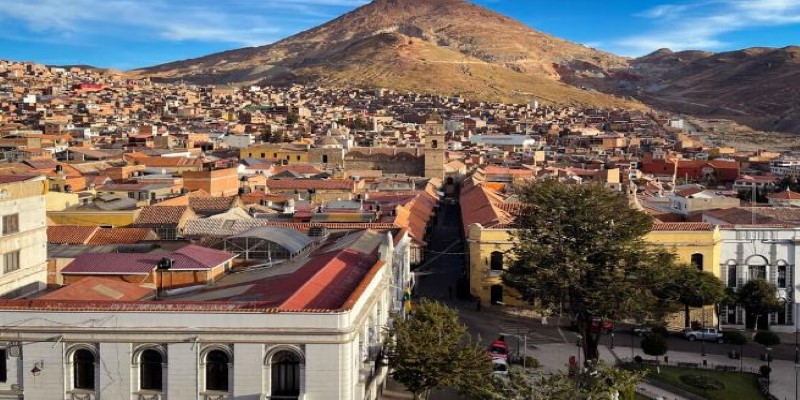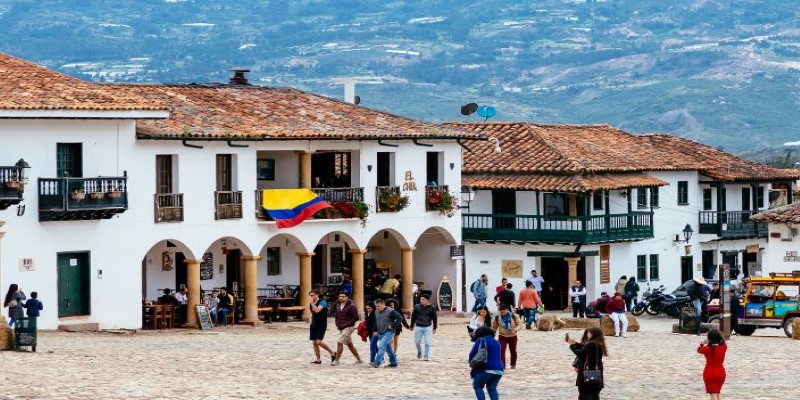ハウスクリーナー募集|未経験OK・高時給の清掃スタッフ求人情報
7 Historic Cities In South America That Are Off The Beaten Path
South America is renowned for its stunning landscapes, vibrant cultures, and rich history. While many travellers flock to iconic destinations like Rio de Janeiro and Machu Picchu, the continent also hosts a myriad of lesser-known cities that offer a unique glimpse into its diverse heritage. This article highlights seven historic towns that are often overlooked but well worth visiting for those seeking a more authentic experience of South America.
South America is renowned for its stunning landscapes, vibrant cultures, and rich history. While many travellers flock to iconic destinations like Rio de Janeiro and Machu Picchu, the continent also hosts a myriad of lesser-known cities that offer a unique glimpse into its diverse heritage. This article highlights seven historic towns that are often overlooked but well worth visiting for those seeking a more authentic experience of South America.
1. Sucre, Bolivia
Nestled in the heart of Bolivia, Sucre is often considered the country's constitutional capital. This charming city is known for its stunning colonial architecture, which has earned it a UNESCO World Heritage designation. Walking through Sucre is like stepping back in time, with whitewashed buildings adorned with vibrant blue balconies lining the cobblestone streets. The city is also home to several museums, including the Museo de la Recoleta, which showcases pre-Columbian artefacts and local art.
Sucre is particularly notable for its role in Bolivia's independence movement. Visitors can explore the historic Casa de la Libertad, where the Bolivian Declaration of Independence was signed in 1825. Beyond its historical significance, Sucre is a gateway to natural wonders, including the nearby Cretaceous Park, where dinosaur footprints can be found, offering a fascinating look at the region's prehistoric past.
2. Arequipa, Peru
Arequipa, often referred to as "La Ciudad Blanca" or "The White City," stands out due to its unique volcanic sillar stone architecture, which gives the city a distinct look. The historical centre, a UNESCO World Heritage Site, features beautiful baroque buildings, including the stunning Santa Catalina Monastery, a city within a city that showcases the rich religious heritage of the area.

Arequipa also serves as an excellent base for adventurers looking to tackle the nearby Colca Canyon, one of the deepest canyons in the world. The canyon is famous for its breathtaking views and the majestic Andean condors that can often be seen soaring overhead. The local cuisine, including rocoto relleno (stuffed spicy peppers) and chupe de Camarones (shrimp chowder), adds another layer of appeal, making Arequipa a city that beautifully combines history, culture, and nature.
3. Salta, Argentina
Salta is a hidden gem located in northwestern Argentina. Known for its colonial architecture and breathtaking mountain scenery, the city is often overlooked in favour of more popular tourist destinations. The Plaza 9 de Julio is the heart of Salta, surrounded by beautiful buildings like the Salta Cathedral and the Cabildo, which reflect the city's rich history.

One of Salta's most captivating aspects is its proximity to stunning natural landscapes. The Quebrada de Humahuaca, a UNESCO World Heritage Site, features colourful mountains and ancient Incan ruins, making it a perfect spot for those interested in culture and nature. The local culture is also vibrant, with traditional music, dance, and festivals celebrating the region's Indigenous heritage. Salta is a place where visitors can immerse themselves in Argentine history while enjoying the warm hospitality of its residents.
4. Ouro Preto, Brazil
Ouro Preto is a remarkable city in Brazil that boasts some of South America's finest examples of colonial architecture. Once a significant gold mining centre during the 18th century, Ouro Preto is now a UNESCO World Heritage Site, celebrated for its baroque churches and historic buildings. The cobblestone streets wind through the city, leading to breathtaking views of the surrounding mountains.

The city's history is intricately tied to the Brazilian gold rush, and visitors can learn about this fascinating past at the Museu da Inconfidência, which showcases artefacts from that era. Notably, Ouro Preto is home to some of the most beautiful churches in Brazil, including the Igreja de São Francisco de Assis, known for its intricate interior and stunning art. The city's vibrant culture is evident in its lively festivals, such as Carnival, where locals celebrate with music, dance, and colourful parades.
5. Potosí, Bolivia
Potosí is one of the highest cities in the world, sitting at an altitude of over 4,000 meters (13,000 feet). It is a city steeped in history, once considered one of the richest in the world due to its silver mines that fueled the Spanish Empire in the 16th century. The legacy of this wealth can still be seen today in the city’s impressive colonial architecture, including the stunning Casa de la Moneda, which served as the mint during the colonial era.

Visitors to Potosí can take guided tours of the Cerro Rico mountain, where miners still extract silver, offering a glimpse into the challenging conditions they endure. The city’s history is marked by both prosperity and hardship, making it a poignant place to reflect on the impact of colonialism in South America. Potosí's vibrant markets, where locals sell traditional crafts and foods, provide an authentic experience of Bolivian culture.
6. Villa De Leyva, Colombia
Villa de Leyva is a picturesque colonial town in Colombia, characterized by its cobblestone streets and whitewashed buildings. The town's main square, Plaza Mayor, is one of South America's largest and is surrounded by stunning colonial architecture. Villa de Leyva is a popular weekend getaway for Bogota residents, but it retains an off-the-beaten-path charm.

The town is steeped in history, dating back to the 16th century when it was founded as a Spanish colonial outpost. Visitors can explore the various museums, including the Museo del Carmen, which houses an impressive collection of religious art. The surrounding area is also worth exploring, with attractions such as the Pozos Azules, a series of striking blue ponds, and the nearby Iguaque National Park, known for its rich biodiversity and stunning landscapes. Villa de Leyva offers a serene escape into Colombia's rich cultural and natural heritage.
7. Cuenca, Ecuador
Cuenca encapsulates the essence of Ecuador's colonial past with its charming streets, beautiful plazas, and well-preserved architecture. As a UNESCO World Heritage Site, Cuenca's historical centre features stunning buildings made of local materials, including the iconic blue-domed Cathedral of the Immaculate Conception. The city's vibrant markets, such as Mercado 10 de Agosto, offer a glimpse into daily life and local cuisine.
Cuenca is also known for its thriving arts scene, with numerous galleries and cultural events showcasing local talent. Visitors can immerse themselves in the city's history by visiting the Pumapungo Museum, which offers insight into the region's pre-Columbian cultures. The surrounding countryside is equally captivating, with opportunities for hiking and exploring the nearby Cajas National Park, known for its unique ecosystem and stunning landscapes. Cuenca is a city where history, culture, and nature blend seamlessly, making it an exceptional destination.
Conclusion
South America has historic cities offering a wealth of culture, architecture, and natural beauty. While popular destinations often overshadow them, these seven cities—Sucre, Arequipa, Salta, Ouro Preto, Potosí, Villa de Leyva, and Cuenca—invite visitors to delve deeper into the continent's rich history. Each city tells a unique story, reflecting the diverse cultures and traditions that have shaped South America over the centuries. For those willing to venture off the beaten path, these destinations promise unforgettable experiences and insights into the continent's fascinating past. Whether exploring colonial architecture, tasting local cuisine, or connecting with the warmth of the people, these cities offer a glimpse into the heart of South America that travellers often miss.










